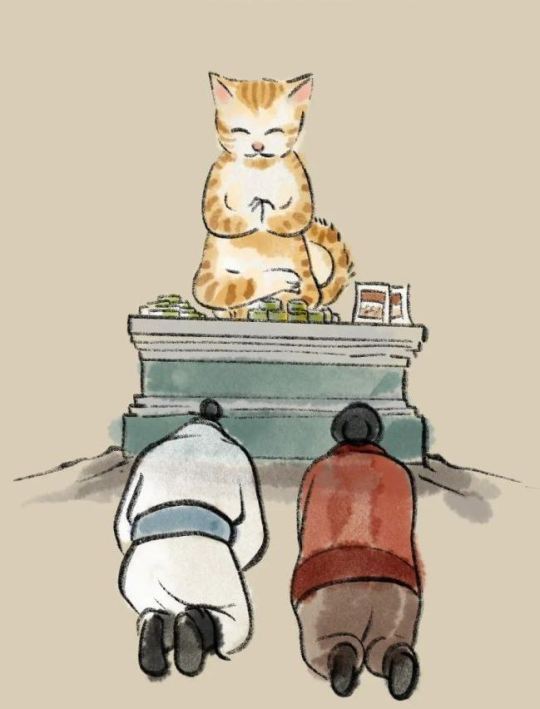#archaeology confessions
Text
Reflecting on this Semester in Game Design
Reflections. Progressions. Possessions. Upon my entrance into the environs of academic game studies I found myself in need of rapid relearning. Since our first module in August I shifted from an absolute plebeian game player to a systems thinking game designer, The transformation is marvelous and remains challenging as hell and that’s why I am here and remain absolutely smitten with the field.…

View On WordPress
#Adventure#adventure travel#Africa#anthropology#Archaeology#artist#author#Backpacking#Blogging#buddhism#comparative literature#Confession#education#educator#folklore#game design#game dev#game development#game studies#game writing#graduate school#History#inspiration#instruction#instructional design#interaction design#japan#japanese#Kansas City#Karl kapp
2 notes
·
View notes
Text

Jukebox Confessional
I would like to invite participation in this project. If you wish to take part, anonymously if you prefer, please send your `confession' to the following address:
Dr John Perivolaris
Grouse Lodge
Dippen
Isle of Arran
KA27 8RW
Scotland
United Kingdom
You are free to interpret the term confession' as freely as you wish. Your confession' may be textual, photographic, artistic, or object-based, or even a combination thereof.
Participation implies that you are willing to have your `confession' included, credited or anonymously, in future online/physical publication and/or exhibition.
#jukebox#confessional#fujifilm xf10#silver efex pro 2#black and white#john perivolaris#monochrome#confession#Anamnistika#greek islands#chios#aegean sea#vessa#AMi Continental#archaeology#popular culture#analogue#europe#nostalgia#music#Songs#modernity#interior#mediterranean#memory#Past#Time#Village
2 notes
·
View notes
Text
An Introduction to Myself and My WIP!

Hello everyone! A confession, this is actually a re-introduction. I've been here on Tumblr for a little less than a year now, but I haven't been the best about being active, life just sort of got in the way. As such I would like to reintroduce myself and what I've been working on.
For the purposes of Tumblr and in the interest of privacy you can call me C. I am in my mid-twenties, I use he/him pronouns, and I am happily married to my partner, who is also a C. I am queer, as is my partner. I enjoy cooking, fishing, Dnd(ing?), reading, and of course writing.
We both originally come from the US but we are currently living on the east coast of Scotland as I pursue my Msc in Archaeology.
I am trying to be a bit more active on here and I am always open to things like tags and asks, even if it takes me a bit to respond.
I think that's about it for me, and so without further ado let me introduce or reintroduce you to my WIP.
Testaments of the Green Sea

Genre: Epic Fantasy
Themes and Tropes (Or more accurately a random assortment of words vaguely related to the plot): Found Family, immortality, loss, love, war, power, memory, magic, insanity, The passage of time, growing up, queerness in the ancient world, violence, spirits, fantasy outside of medieval europe
Summary: Book one of the Testaments of the Green Sea (The lands of the Green Sea are pictured above) follows the journeys of the giant slave Narul and the princess Ninma.
After unexpected tragedy forces the two to flee from the Great city of Labisa, they find themselves on a journey which carries them across the ancient lands of Kishetal. Along the way they encounter spirits, demons, war, gods, pirates, and slavers.
TW for death/grief, violence/blood/gore, mental illness, physical illness, abuse, and cannibalism, awkward queerness, secondhand embarrasment etc, etc.
Excerpt( First Paragraph of Chapter 1):
The blood dripped into the awaiting bowl, painting its alabaster walls crimson. The slave watched the dark liquid trickle down his arm, skirting past the hairs, rolling veins, and moles. Even after these twenty years of weekly blood lettings, he could not shake a creeping feeling of unease as his eyes followed the sanguine river creeping its way across his arm. His own face gazed back at him from the scarlet pool. He could not meet his own eye, could not stand to look that creature. He turned away.
Draft Status: The second draft of the manuscript is currently being edited, I will be looking for my first round of Beta Readers likely before the end of the year.
This is just part one of a much larger series. My partner is currently working on the beginnings of their own series, set in the same world but 3,000 years in the future, roughly aligning with our own Great War Period.
I'm so excited to share more with you, and I love answering questions!

Narul and Ninma courtesy of @faeporcelain
#world building#fantasy#fantasy writing#queer fantasy#worldbuilding#fantasy world#testamentsofthegreensea#narul#fantasy worldbuilding#writing#wip#current wip#kobani questions#fantasy map#if y'all have any questions please ask!#ask#send asks
97 notes
·
View notes
Text

I typed up the Pentiment bibliography for my own use and thought I’d share it here too. In case anyone else is fixated enough on this game to embark on some light extra-curricular reading
I haven’t searched for every one of these books but a fair few can be found via one of the following: JSTOR / archive.org / pdfdrive.com / libgen + libgen.rocks; or respective websites for the journal articles.
List below the cut!
Beach, Alison I, Women as Scribes: Book Production and Monastic Reform in Twelfth-Century Bavaria. Cambridge University Press, 2004
Berger, Jutta Maria. Die Geschichte der Gastfreundschaft im hochmittelalterlichen Mönchtum die Cistercienser. Akademie Verlag GmbH, 1999
Blickle, Peter. The Revolution of 1525. Translated by Thomas A. Brady, Jr. and H.C. Erik Midelfort. The Johns Hopkins University Press, 1985
Brady, Thomas A., Jr. “Imperial Destinies: A New Biography of the Emperor Maximilian I.” The Journal of Modern History, vol.62, no.2, 1990. pp. 298-314
Brandl, Rainer. “Art or Craft? Art and the Artist in Medieval Nuremberg.” Gothic and Renaissance Art in Nuremberg 1300-2550. The Metropolitan Museum of Art, 1986
Byars, Jana L., “Prostitutes and Prostitution in Late Medieval Barcelona.” Masters Theses. Western Michigan University, 1997
Cashion, Debra Taylor. “The Art of Nikolaus Glockendon: Imitation and Originality in the Art of Renaissance Germany.” Journal of Historians of Netherlandish Art, vol.2, no.1-2, 2010
de Hamel, Christopher. A History of Illuminated Manuscripts. Phaidon Press Limited, 1986
Eco, Umberto. The Name of the Rose. Translated by William Weaver. Mariner Books, 2014
Eco, Umberto. Baudolino. Translated by William Weave. Boston, Mariner Books, 2003
Fournier, Jacques. “The Inquisition Records of Jacques Fournier.” Translated by Nancy P. Stork, San Jose University, 2020
Geary, Patrick. “Humiliation of Saints.” In Saints and their cults: studies in religious sociology, folklore, and history. Edited by Stephen Wilson. Cambridge University Press, 1985. pp. 123-140
Harrington, Joel F. The Faithful Executioner: Life and Death, Honor and Shame in the Turbulent Sixteenth Century. Farrar, Straus and Giroux, 2013
Hertzka, Gottfied and Wighard Strehlow. Große Hildegard-Apotheke. Christiana-Verlag, 2017
Hildegard von Bingen. Physica. Edited by Reiner Hildebrandt and Thomas Gloning. De Gruyter, 2010
Julian of Norwich. Revelations of Divine Love. Translated by Barry Windeatt. Oxford University Press, 2015
Karras, Ruth Mazo. Sexuality in Medieval Europe: Doing Unto Others. Routledge, 2017
Kerr, Julie. Monastic Hospitality: The Benedictines in England, c.1070-c.1250. Boydell Press, 2007
Kieckhefer, Richard. Forbidden rites: a necromancer's manual of the fifteenth century. Sutton, 1997
Kümin, Beat and B. Ann Tlusty. The World of the Tavern: Public Houses in Early Modern Europe. Routledge, 2017
Ilner, Thomas, et al. The Economy of Dürnberg-Bei-Hallein: an Iron Age Salt-mining Centre in the Austrian Alps. The Antiquaries Journal, vol. 83, 2003. pp. 123-194
Làng, Benedek. Unlocked Books: Manuscripts of Learned Magic in the Medieval Libraries of Central Europe. The Pennsylvania State University Press, 2008
Lindeman, Mary. Medicine and Society in Early Modern Europe. Cambridge University Press, 2010
Lowe, Kate. “'Representing' Africa: Ambassadors and Princes from Christian Africa to Renaissance Italy and Portugal, 1402-1608.” Transactions of the Royal Historical Society Sixth Series, vol. 17, pp. 101-128
Meyers, David. “Ritual, Confession, and Religion in Sixteenth-Century Germany.” Archiv für Reformationsgeschichte, vol. 89, 1998. pp. 125-143
Murat, Zuleika. “Wall paintings through the ages: the medieval period (Italy, twelfth to fifteenth century).” Archaeological and Anthropological Sciences, vol. 12, no. 191. Springer, October 2021. pp. 1-27
Overty, Joanne Filippone. “The Cost of Doing Scribal Business: Prices of Manuscript Books in England, 1300-1483.” Book History 11, 2008. pp. 1-32
Page, Sophie. Magic in the Cloister: Pious Motives, Illicit Interests and Occult Approaches to the Medieval Universe. The Pennsylvania State University Press, 2013
Park, Katharine. “The Criminal and the Saintly Body: Autopsy and Dissection in Renaissance Italy.” Renaissance Quarterly, vol. 47, no. 1, Spring 1994. pp. 1-33
Rebel, Hermann. Peasant Classes: The Bureaucratization of Property and Family Relations under Early Habsburg Absolutism, 1511-1636. Princeton University Press, 1983
Rublack, Ulinka. “Pregnancy, Childbirth, and the Female Body in Early Modern Germany.” Past & Present, vol. 150, no. 1, February 1996. pp. 84-110
Salvadore, Matteo. “The Ethiopian Age of Exploration: Prester John's Discovery of Europe, 1306-1458.” Journal of World History, vol. 21, no. 4, 2011. pp. 593 - 627
Sangster, Alan. “The Earliest Known Treatise on Double Entry Bookkeeping by Marino de Raphaeli”. The Accounting Historians Journal, vol. 42, no. 2, 2015. pp. 1-33.
Throop, Priscilla. Hildegard von Bingen's Physica: The Complete English Translation of Her Classic Work on Health and Healing. Healing Arts Press, 1998
Usher, Abbott Payson. “The Origins of Banking: The Primitive Bank of Deposit, 1200-1600.” The Economic History Review, vol. 4, no. 4, 1934. pp. 399-428
Waldman, Louis A. “Commissioning Art in Florence for Matthias Corvinus: The Painter and Agent Alexander Formoser and his Sons, Jacopo and Raffaello del Tedesco.” Italy and Hungary: Humanism and Art in the Early Renaissance. Edited by Péter Farbaky and Louis A. Waldman, Villa I Tatti, 2011. pp. 427-501
Wendt, Ulrich. Kultur und Jagd: ein Birschgang durch die Geschichte. G. Reimer, 1907
Whelan, Mark. “Taxes, Wagenburgs and a Nightingale: The Imperial Abbey of Ellwangen and the Hussite Wars, 1427-1435.” The Journal of Ecclesiastical History, vol. 72, no. 4, 2021, pp. 751-777.e
Wiesner-Hanks, Merry E. Women and Gender in Early Modern Europe. Cambridge University Press, 2008
Yardeni, Ada. The Book of Hebrew Script: History, Paleography, Script Styles, Calligraphy & Design. Tyndale House Publishers, 2010
#pentiment#Pentiment bibliography#some of these books give me strong first-year undergrad vibes#even just seeing ulinka rublack’s name gives me semi-traumatic flashbacks to cultural history seminars#would I cope better with it now that I don’t have to write essays each week on the topic?#¯\_ (ツ)_/¯#probs not tbh#also it probably would have been a lot faster if I could have pulled this list from game files somehow#but I do not know how to do that :)))#Anyway I hope this is of use to somebody at some point#I wish you all a very happy reading about the primitive deposit banking system everybody 😌
762 notes
·
View notes
Text
While it is hilarious imagining Layton’s students groaning/celebrating when they find out their puzzle-obsessed archaeology tutor has cancelled class AGAIN, do you think his students ever worry about him?
When 27-year-old Layton starts teaching his first ever class (a delayed start to the term), do his new students wonder why he never removes his hat? Do they notice the bruises on his skin or the dark shadows under his eyes? Do they hear the rumours about how Layton just got out of hospital or how he spends his nights working in his office? (What exactly is he researching?) Any students caught gossiping face the wrath of Rosa Grimes, so the rumours eventually fade away.
Sure, Layton was late starting the year, but he’s a dedicated teacher and a true gentleman, so the students and Dean Delmona let it slide. Some of his colleagues view him as a ‘young upstart’— Why on Earth is an archaeology professor assisting the police?— but he is mostly well-liked at Gressenheller.
Professor Layton is patient and sympathetic to students struggling with their work (students like Janice), while at the same time being a driving inspiration (to students like Carmine). He wants his students to succeed, even if their interests lie outside of archaeology.
Seven years into Layton’s teaching career— he suddenly doesn’t turn up to class one day. Layton’s students wait in the empty lecture hall— wait for him to hurry in with a hasty apology— but there’s no sign of Professor Layton. Hershel Layton, who has never taken a sick day in his whole career.
Panicked, several students dash to Layton’s office. (“Maybe he fell asleep on his sofa again…?”) But when they see he isn’t there, they storm into Dean Delmona’s office, who explains that Layton rushed off after receiving an urgent letter— and not to worry, because he has his new assistant to help him. Layton’s students are extremel relieved, but at the same time, curious about what the letter could contain.
When a weary Layton finally returns to Gressenheller after a few days, he is met with concern and endless questions. He confesses that he was involved in solving a mystery, though he won’t reveal the details of said-mystery. He apologises for leaving his class on such short notice and promises he will hold extra sessions for them to catch up.
Of course Layton’s students forgive him. Even true gentlemen need to deal with emergencies from time to time! This was just a one-off, right…?
Right?
Three years later (several adventures and sudden absences later), nothing surprises Layton’s students anymore. Thankfully, the Professor has gotten better at informing Dean Delmona when he will be away. Whenever Layton’s students see the substitute Dr Glaive in their classroom, they assume Layton is off on another adventure. Still, Layton always reviews the notes Dr Glaive leaves for him. He will check in with his students and arrange extra study sessions if they’re struggling—
A lot of them struggle, after the Mobile Fortress incident. They notice that Professor Layton is struggling too… Wasn’t he involved in the case, somehow? Like on a personal level? And where is the Professor’s little apprentice…?
Eventually, news gets out about what happened ten years ago at the Institute of Polydimensional Physics. Layton’s students don’t find out all the details, but they find out about Claire Foley, a young scientist and (like them) a former Gressenheller student... Layton’s lost sweetheart.
When Layton turns up for class the next day, he’s surprised to find an empty lecture hall and an envelope on his desk. It contains two tickets and a letter, signed by all of his students:
“Dear Professor Layton,
Here are two tickets for you and your daughter to visit your apprentice in America. (A true gentleman never refuses a gift!) We’ve already informed Dean Delmona about your holiday…
Please, don’t worry about us. We’ll catch up when you get back.
Right now, we’re off to have a (civil) conversation with Bill Hawks.
Take care!
-Your eager students’
65 notes
·
View notes
Text



[Image ID: There are three images. The first one is similar to a title card and shows a screenshot froom the show supernatural. Dean and Castiel stand facing each other. The screenshot is faded and superimposed with a blue background from a news show. In the front is a logo which says 'Destiel News Channel'. The second is a screenshot of Castiel from the same confession scene. At the bottom is a headline which reads '10,000 year old statue' and a subline which says 'one of the oldest three-dimensional statues seems to be holding his dick'. The top right corner shows a picture of a statue from an archaeological dig site. The man is shown from the knees up. His head is slightly damaged and about as big as his rib cage. His hands lay in his lap holding something that could be interpreted (and is in articles) as his penis. The third image is a screenshot of Dean from the same scene edited so that a text looking like subtitles spells out 'I love you'. /End ID]
#the man was found recently in turkey :)#tas tepeler#turkey#archaeology#history#statues#destiel#destiel news channel#destiel meme
147 notes
·
View notes
Text

i’m sorry but this is the FUNNIEST THING i’ve ever read… a bunch of academics peering at this wooden dildo and having Intense Discussions about it
GUARDIAN - Archaeologists believe they may have found the only known lifesize Roman dildo, discovered in a ditch in what were the farthest northern fringes of the empire.
If it was not used as a sexual implement then the 2,000-year-old object may have been an erect penis-shaped pestle, or it could have been a feature from a statue that people touched for good luck.
What it definitely is not is what it was catalogued as after its discovery at the Roman fort of Vindolanda in Northumberland in 1992: a darning tool.
“I have to confess,” said Newcastle University archaeology senior lecturer Rob Collins, “part of me thinks it’s kind of self-evident that it is a penis. I don’t know who entered it into the catalogue. Maybe it was somebody uncomfortable with it or didn’t think the Romans would do such silly things.”
If they did think that, they could not be more wrong given that two- and three-dimensional representations of phalli were ubiquitous in the Roman world, whether in mosaics, frescoes, pot decoration or pendants worn around the neck.
The Vindolanda phallus is 16cm long but, researchers say, was probably larger because archaeological wood is prone to shrinkage and warping.

It has been examined by researchers at Newcastle University and University College Dublin. The analysis has revealed it to be, at the very least, the first known example of a disembodied phallus made of wood recovered anywhere in the Roman world.
The phallus was found in a ditch along with dozens of shoes and dress accessories as well as craft waste products such as leather off-cuts and worked antler – perhaps one reason for it being seen as a darning tool.
“What makes this a first is that it is not a small, miniature phallus,” said Collins. “It’s lifesize. It’s also important because wood just doesn’t normally survive … we couldn’t find any parallels.”
The size and uncertainty of function was fascinating, he said. “Often in archaeology when we find an object we can tell what it was used for or deduce what it was used for. That wasn’t the case for this object. We have had to cast our nets wide in thinking what would a six-and-a-half-inch wooden carving of a phallus be used for.
“We had some very interesting discussions.”
Ancient phallic objects were often used for warding off evil. The analysis showed the Vindolanda phallus had notably smoother ends, indicating it was used for something over a period of time.
The team has alighted on three possible theories, all of which are outlined in a detailed discussion paper published in the journal Antiquity.
One theory is that it was used for sexual reasons. That could mean it was a sex toy although some caution is needed, said Collins.
“Sometimes they [dildos] weren’t always used for pleasure … they can be implements of torture so I’m very conscious of using the term sex toy. Hopefully that is what it was used for. That is the most exciting and intriguing possibility.
“If that is the case it would be, to our knowledge, the first Roman dildo that’s been encountered from archaeology. We know from Greek and Roman poetry and Greek and Roman art that they used dildos. But we haven’t had any archaeological examples found which is intriguing in itself.
“If it is that and it is found up here on the northern fringe of the empire and not down in the rich heartland of Roman Italy … it is kind of astounding.”
Theory two is that the object was used as a pestle, either for culinary purposes or to grind cosmetic or medicinal ingredients. Its size would have made it easy to use and the shape would have imbued the food or ingredients with perceived magical properties.
The third option is that it was meant to slot into a statue which passersby would touch for good luck or to absorb or activate protection from misfortune – which was common throughout the Roman empire.
If that was the case, the statue would probably have been located near the entrance to an important building but the evidence indicates that the phallus was either indoors or at least not in an exposed position outside for any length of time.
Researchers hope the Vindolanda phallus will prompt a search for similar objects in other collections. In the meantime it has gone on display at the Vindolanda museum.
254 notes
·
View notes
Text
Random Stuff #13: Cats in China--History (Part 1)
(Warning: Very long post ahead with multiple pictures!)
(Link to Part 2)
Since this topic is pretty big, I will split the content across 4 posts, but even then these posts will only be a shallow summary of the subject.
This small series of posts is dedicated to my fluffy quadrupedal friend, 小葱 (Little Green Onion).

-------------------------------------------------
Did you know that there are over 200 cats in the Palace Museum/故宫博物院 in Beijing? Some of these cats were descendants of the pet cats of the imperial family hundreds of years ago, and some of these cats were simply strays, but they all found a home in the Palace Museum, and are now being fed and taken care of by the museum employees. You may even catch a glimpse of one of these cats during a visit to the museum.
Here are two of these cats, Jixiang/吉祥 (right; name means “auspicious”) and Ruyi/如意 (left; name means “(may things go) according to (one’s) wishes”)

Speaking of the Old Palace and royal kitties, cats actually have a fairly long history of being mousers and human companions in China, and sometimes they were even seen as powerful spirits to be both worshipped and feared.
Cats As Guardian Spirits
According to archaeological evidence, in China, cats came into people’s lives as early as 5300 years ago (~3300 BC). People of the Neolithic Yangshao Culture/仰韶文化 (~5000 - 3000 BC) in what is now central China grew millet, rice, and vegetables. These crops were bound to attract small rodents like mice and rats to human villages, which attracted wild cats in turn. There were no evidence showing that these wild cats had any sort of special or intimate bond with humans yet, so the relationship was likely a simple mutualistic relationship in which cats benefitted from having a steady source of prey, while humans benefitted from having their harvest protected from rodents. In the Book of Rites/《禮記》, a book detailing Zhou dynasty (1046 - 256 BC) etiquettes, administration, and ceremonial rites, there was a passage on the religious aspect of this mutualistic relationship:
“The wise and gentle rulers of yore will always repay the good deeds that others have done for them. Welcome the cats, for they are hunters of mice; welcome the tigers, for they are hunters of boars; welcome them and worship them”. (“古之君子,使之必報之。迎貓,為其食田鼠也;迎虎,為其食田豕也,迎而祭之也 。”)
-- Book of Rites, The Great Suburban Sacrificial Rites chapter (《禮記·郊特牲》).
As we can see in this short passage, people in ancient China regarded cats as spiritual beings--one of eight important animal spirits worshipped in the great ritual at the end of the year that must be performed by the ruler--and made offerings to them as a way to thank them for controlling rodent populations in the fields and protecting the year’s harvest.

^ Illustration by 国馆 on Zhihu.
Cats as Evil Ghosts
In ancient folk belief, however, cats eventually became associated with wugu/巫蛊, which can be generally understood as “witchcraft” or “black magic”. Practitioners would sacrifice cats and keep “cat ghosts”/猫鬼, then send them out to curse whoever they wish to harm and steal money from. There was one famous case of this during Sui dynasty (581 - 618 AD) that was recorded in Book of Sui /《隋書》, the traditional official historical records of Sui dynasty that was completed in 636 AD. As the chapter “Consort Kin” (《隋書·外戚》) described, when Empress Dugu and Head of Secretariat Yang Su’s wife fell ill, the doctors diagnosed their illnesses as “caused by cat ghosts”. Emperor Wen of Sui/隋文帝 (personal name Yang Jian/楊堅) assumed that Dugu Tuo/獨孤陀 was behind the mysterious illnesses since Dugu Tuo was the paternal half-brother of Empress Dugu and his wife was the paternal half-sister of Yang Su, but Dugu Tuo denied having anything to do with it. So his household was questioned, and finally one of his housemaids confessed to be a practitioner of “witchcraft” and that she had cursed Empress Dugu and Yang Su’s family with her cat ghost under orders from Dugu Tuo. Dugu Tuo was stripped of all his titles along with his wife, and both were demoted to commoner status. So as we can see it was big enough in folk belief that it actually made its way into some imperial family drama. After this event, Emperor Wen of Sui declared a ban on these practices that were meant to cause harm to others.

^ A modern illustration of a “Cat ghost”, from the work titled Hundred Ghosts of China/《中国百鬼录》.
Cats in Analogies and Folklore
Cats have also been used in the classic cat-and-mouse analogies in different situations. During Wu Zetian/武則天’s ascent to power in Tang dynasty in 655 AD, she was involved in a power struggle with Empress Wang and Consort Xiao, and after some back-and-forths, Empress Wang and Consort Xiao were demoted to commoner status and imprisoned. Consort Xiao then cursed Wu Zetian, saying:
“May you become a mouse and I a cat, so I can choke you!” (”願阿武為老鼠,吾作貓兒,生生扼其喉!”)
-- Old Book of Tang, ”Empresses and Consorts Part 1”/《舊唐書· 后妃上》
Apparently after this happened, Wu Zetian banned cats from the palace out of fear.
Another example of this cat-and-mouse analogy was the memorial Su Shi/蘇軾 submitted to Emperor Shenzong of Song/宋神宗 (personal name Zhao Xu/趙頊) that argued against the parts of the reform proposed by Wang Anshi/王安石. This memorial was preserved and later named《上神宗皇帝書》. In it, Su Shi argued that government officials must be able to freely object another official’s proposal in order to prevent treacherous officials from gaining too much power with this analogy:
“We keep cats in order to keep mice at bay, but we cannot keep cats who can’t catch mice just because there are no mice around; we keep dogs in order to keep burglars away from our homes, but we cannot keep dogs that don’t bark just because there are no burglars around”. (”然而養貓所以去鼠,不可以無鼠而養不捕之貓。畜狗所以防奸,不可以無奸而畜不吠之狗”)
There weren’t only cat-and-mouse analogies, however. There's a short fable about cats and tigers that was passed down through the generations from at least Song dynasty all the way to the present day. Even I have heard of this story as a child. In this fable, the tiger was initially very clumsy, so the tiger asked a cat to teach it how to hunt. The cat agreed and taught the tiger how to track down, stalk, pounce, and play with prey, but refrained from teaching the tiger about tree-climbing. The tiger eventually mastered the art of hunting, and one day the tiger turned on its teacher, the cat, who then climbed atop a tree to save its own life. The moral of the story was either “never teach others everything you know, in case they use your knowledge against you”, or “never teach those who are ungrateful”, which resulted in the xiehouyu/歇后语 (a type of Chinese proverb) “cat teaching the tiger -- withhold some of your abilities” (“猫教老虎--留一手”). Of course, this fable doesn’t really stand in terms of scientific accuracy, seeing as tigers are proficient tree-climbers themselves, but the fable itself is still very interesting nonetheless. Although the origin of this fable has now faded into obscurity, the earliest record I could find was from the self-annotation on the poem “Mocking the Cats”/《嘲畜貓》 by the famous Song-era poet Lu You/陸游 in 1198 AD, which showed that this fable was already popular in folk culture in Southern Song dynasty:
“In folk belief cats were the uncles of tigers, they taught the tigers everything except how to climb trees”. (“俗言貓為虎舅,教虎百為惟不教上樹”)

^ Modern illustration of the fable, from children’s book The Tiger and the Cat by Eitaro Oshima.
Historical texts showed that at least from Southern and Northern dynasties (420 - 589 AD) and on, most people kept cats for their ability to catch mice, and oftentimes keeping cats as just house pets was something that was still limited to royalty, nobility, and rich people. But as we would see in Part 2, there were evidence from Song dynasty that showed a definite change in how cats were viewed in the ordinary household.
(Part 2 Here!)
247 notes
·
View notes
Text
vimeo
The Sunday Confessional...
Have you watched Archaeology?
I must confess, I watched this movie mostly because of Shaun. Oh, he looked divine there! However, after watching it, I couldn't stop thinking about this short film for a long time... This movie is really good, multi-dimensional, and thought-provoking... Highly recommend it.
Did I mention that Shaun looked divine? Yes, he did! A bit tousled, with a three-day stubble... and that plaid shirt...
Returning to the movie... hmmm.
I'm curious about your opinions, did you like the film? What do you think: who or what was that stranger?
Shaun definitely looked divine... I think he had his hair dyed...
I've always wanted to be an archaeologist... I could help him... pass him the shovel, wipe the sweat off his forehead, actually, I could do anything with him...
#shaun evans#archeaology#the sunday confessional#sunday shaun special#it's all about science once again#You've gotten dirty darling#come#I'll wash your back...#or whatever you want...#he really looked divine#and he still does ...
22 notes
·
View notes
Text
The Lost City (or, In Praise of Smart Dumb Movies)
Finally, the movie about archaeology that will give me drama about fragmentary texts and inexact translation, and acknowledge gender inequity on the academic job market! And it’s a dumb romcom with Sandra Bullock!
In the heyday of variably-dumb romcoms starring Sandra Bullock, I occasionally, it must be confessed, grumbled at watching them with my mother and sister. (I was, insufferably, more into old Hollywood melodrama, my dad’s British comedies, and the French movies that my instructors stuck into VHS players as nonchalantly as though they weren’t portals into alternate emotional universes.) The Lost City forgives me for this gendered snobbery, and invites me to have a good time watching a campy movie with Sandra Bullock as the romantic protagonist/scholar/action heroine, Daniel Radcliffe as the evil mastermind, and Channing Tatum as, well, a himbo.
It is also painfully accurate about The Writing Experience™:

Other delights include a discussion of fandom culture and misogynist condescension to it, and did I mention the running joke about ancient language translation? Also, a fascinating look at the uses of social media in commodifying the human experience and human attention (oof) and a twist on the romcom trope of the Black best friend™ that actually acknowledges, for instance, how disproportionately likely Black women are to be caretakers in multigenerational households (Da’Vine Joy Randolph was great.) So... it’s a smart dumb romcom.
117 notes
·
View notes
Text
The ins and outs of love
Genshin Modern AU Summary
Sumeru's world renowned Akademiya has no need for much explaining, anyone who hasn't heard of it must be living under a rock or not from Teyvat itself. In the grand age of technology and modernization, Sumeru has become the largest immigration hub as aspiring people all across the world come to pursue knowledge and take the first steps into adulthood. To accommodate for the influx of people, Sumeru architects have gotten the help of Liyue's Adepti Arts and Contracting to create subspace apartments to prevent the need of clear cutting the sacred forests.
⚠️Trigger warnings ⚠️ : Mental illnesses, drug/alcohol/substance use/abuse, mentions of child enslavement (past event, a bit graphic), very brief mention of a sui attempt (also in the past, it's referenced very vaguely in a line of dialogue.), Abandonment mentions (Scara ofc), death, kidnapping, and slight yandere Heizou as a result of something later.
You are attending the school with your childhood friends Aether and Lumine and share an apartment with quite the colorful group of students:

Aether, an archaeology major wanting to explore into the depths of this strange world. He's been your best friend for so long you can't remember a time before meeting him.

Kazuha, a literary major that always seems to drift about. He's only recently left his hometown in Inazuma, originally intending to travel with the Crux fleet but heard a rumor that the Akademiya had sacred poems and long forgotten literature and couldn't resist the temptation to join.

Venti, a failing music major with a bit of a drinking problem. You've known him since highschool when he and his best friend Xiao talked you and Aether into making a band for one festival. After growing up and being ran out of Angel's Share tavern a few too many times, the godlike bard decided to pursue a more worldwide music career, using various agencies is Liyue Harbor to get his start he attends college by day and goes to almost every party and rave as he possibly can by night.
Students aren't the only ones in your apartment though, due to Sumeru's need to keep the forests intact, regular citizens are also put into these luxury apartments, which is why they are large in the first place. Also in your apartment is:

Heizou, currently taking on a recent case in Liyue due to Inazuma 'not having enough mysteries to solve'. He's charismatic, witty and a bit of a flirt but you've gotten past that and seen how much of a hard worker he is. At times he lends you his knowledge whether you ask or not.

Scaramouche, a guy shrouded in mystery. No one really knows who he is or what he likes, except for his fans and viewers that tune in nearly twice every week to his streams. From gaming, to arts and crafts, to just random content whenever he feels the creative itch, Scaramouche is a well beloved figure among the masses though the rumors about his possible Fatui ties and the sudden tension between him and Kazuha make you a bit nervous to interact.

Xiao, a guy who works two jobs from dawn to dusk and sometimes later. He's a good friend with Venti and you've known him just as long as the bard, he was the 'emo boy' in highschool but you two got along fairly well. One day he took you to a field of flowers and confessed a very dark secret that you swore to keep and haven't told a soul, not even Aether.
#genshin impact#genshin impact fanfics#6reeze#6reeze x reader#aether#aether x reader#heizou#heizou x reader#kazuha#kazuha x reader#scaramouche#scaramouche x reader#venti#venti x reader#xiao#xiao x reader#genshin impact x reader
83 notes
·
View notes
Text
confession time. i have never watched the exorcist. but im watching it now and my husband is listening to me yell about the "archaeology" going on.
WHY DOES EVERYONE HAVE SLEDGEHAMMERS AND PICKAXES
kid shows up "they found something... small pieces" YEAH I BET EVERYTHING IS IN SMALL PIECES
no wonder this demon is pissed. people hacking apart their ancient site of worship instead of caring the tiniest bit about preservation
19 notes
·
View notes
Text
What is your favourite Doctor Who story?


ROUND 4 MASTERPOST
synopses and propaganda under the cut
Silence in the Library/Forest of the Dead
Synopsis
The Tenth Doctor takes Donna Noble to a planet-sized library in the 52nd century. They find it empty of human life, with countless other living beings. An information kiosk warns them to "count the shadows". An archaeological expedition arrives, lead by the mysterious Professor River Song, who brings the cryptic last message sent from the library: "4022 saved, No survivors".
Propaganda no propaganda submitted
Hell Bent
Synopsis
After being tortured for billions of years inside his own confession dial, the Doctor has been pushed to the brink of madness. Returning to Gallifrey, he must face his own people, the Time Lords, but how far will he go in his quest for vengeance? Does he have another confession? And how fiercely does his rage towards them for causing Clara's death burn?
Propaganda no propaganda submitted
30 notes
·
View notes
Text
Brief history of wicca

A brief history:
Gerald Gardner, an English civil servant, novelist, and magician, is credited with establishing the religion that would become known as Wicca. Gardner, born in 1884, travelled much as a child and developed an interest in anthropology, archaeology, folklore, and, finally, spiritualism and other esoteric issues. He belonged to a number of groups and associations relating to his hobbies, including the Rosicrucian Order, which he joined in 1939. Gardner met other acquaintances who were members of an even more hidden inner group, and they confessed to him that they were a witch coven. He was inducted into the coven in September of that year.
Several years prior, in the early 1920s, a popular hypothesis circulated in anthropological circles about an old pagan religion that had been largely eradicated by Christianity but was still practiced in secret enclaves across Western Europe. Margaret Murray, the anthropologist who pushed the thesis, referred to the religion as a "Witch-cult," claiming that the remaining practitioners were organised into 13-member covens. When Gardner encountered the New Forest group, he knew they were one of the last vestiges of this old pre-Christian religion, and he intended to help assure the Witch-cult's survival into the twentieth century.
Throughout the 1940s, Gardner remained interested in a variety of religious and spiritual traditions and concepts, but his encounters with the New Forest coven had a profound influence. He eventually formed his own coven, Bricket Wood, and began to create a new incarnation of the ancient Witch-cult, drawing inspiration from a variety of sources, including the New Forest coveners, elements of Freemasonry and ceremonial magic, and the work of other occult figures such as Aleister Crowley and Cecil Williamson. Gardner's primary innovation eventually became one of Wicca's most fundamental elements: the worship of a Goddess and a God who were equal in every aspect. This was very unusual after millennia of male-dominated, patriarchal faiths!
Gardner never referred to his relatively young religion as "Wicca." He did occasionally refer to his coven members as "the Wica," an Old English name for sorcerers and diviners. However, the tradition was usually referred to as Witchcraft, or "the Craft," or "the Old Religion." It didn't become recognised as Wicca until at least a decade later, when it expanded to the United States and Australia.
By then, Gardner's disciples and other occultists had produced new versions on his idea, some of which bear little resemblance to the original Bricket Wood coven. In reality, many people in the UK who continue to practise Gardner's rituals as they have been passed down from covener to covener refer to it as British Traditional Witchcraft. These Witches see "Wicca" as something altogether distinct, often referring to it as an American creation. Gardnerian Wicca is the name given to the original version of Wicca in other parts of the world.
Although Gardner is regarded as the founder of the contemporary Witchcraft movement and was undoubtedly one of its most vocal public supporters, he clearly did not do it alone. Indeed, there are several notable personalities throughout Wicca's history. Many of his friends and colleagues participated in the partnership, including Patricia Crowther, Lois Bourne, and Doreen Valiente, as well as mid-century occultists Robert Cochrane and Raymond Buckland. Indeed, the complete history of Wicca and its growth may fill books, but the entire narrative would most likely never be recounted!
Furthermore, Gardner and others took inspiration from information, beliefs, and practices produced by various previous organisations dating back to the British occult resurgence of the late nineteenth century, and even earlier, to the thirteenth century. And those Middle Age occultists did, in fact, deal with ideas and materials from ancient civilizations.
So, even though no evidence for Murray's Witch-cult theory has ever been discovered, and no unbroken tradition of occult practice dating back to antiquity appears to exist, it is possible to argue that there was some kind of spiritual "lineage"—perhaps an eternal divine essence—strong enough to survive centuries of Christian dominance and reappear in modern times. Whatever the case, for individuals who practise Wicca, the experience is really timeless.

11 notes
·
View notes
Text

While performing a routine archaeological dig, I came across some strange shards, relics of something once whole and now shattered.
I have seen this sigil before, in graffiti on crumbling walls and in the margins of old manuscripts, but thought nothing of it. Now, I finally have realized that it must hold a great importance in the mythology of Tumblr. Something about the aura that the shape gives off, once the shards were pushed together in the correct configuration... I confess a shiver went down my spine!
What is it? Well, I am not sure. (Do any of my intelligent followers have any ideas?) In any case, the distinct mineral composition of the shards make me believe they come from a certain content quarry, way out past the Theme Garden.
So, once I have finished this week's work on my Guidebook (which is nearing full completion!) I will once more gather my supplies and venture forth, to see if I can find any further clues. Of all the interesting queries I've investigated regarding the long history of Tumblr, for some reason this one seems be far more strange...
216 notes
·
View notes
Photo

His [Foucault's] vision of European culture as the institutionalised form of oppressive power is taught everywhere as gospel, to students who have neither the culture nor the religion to resist it. Only in France is he widely regarded as a fraud.
- Roger Scruton on Michel Foucault
During student protests in Paris in 1968, Roger Scruton, a francophile, watched students overturn cars to erect barricades and tear up cobblestones to throw at police. It was at that moment he realised he was a conservative.
For Scruton, he didn’t think much of Jean Paul Satre, the father of existentialism, who cobbled together the essence of his philosophy from Alexandre Kojève's reading of Hegel in his famous seminar at the Ecole Pratique des Hautes Etudes in the 1930s. His listeners included Bataille, Aron, Merleau-Ponty, Lacan and Simone de Beauvoir. Each of them drew something different from him. For Sartre, the idea of the self-created individual with radical freedom. Expressed very early on in La nausée, this freedom is a source of anguish for a consciousness which not only considers that the surrounding world has no meaning other than that which it can possibly confer on it, but which experiences itself as a kind of nothingness.
How, starting from such a philosophy, does Sartre arrive at the idea of commitment to revolution and socialism? It is a mystery. Scruton wrote, "According to the metaphysics enunciated in Being and Nothingness, the correct answer to the question "To what shall I commit myself?" should be: What does it matter, as long as you can want it as a law for yourself." "But this is not the answer offered by Sartre, whose commitment is to an ideal that is at odds with his own philosophy.”
With his theory of episteme, Foucault gives us a new version of the Marxist concept of ideology.
Despite what some might think, Scruton wasn’t entirely dismissive of Foucault whose thought was more subtle and interesting than Sartre’s. Scruton confesses a certain tenderness for Michel Foucault's style, for his flamboyant imagination. But Scruton does not see his archaeology of knowledge as a great innovation. According to a habit shared by many French left-wing intellectuals, like Sartre himself, Foucault intended to tear away the veils behind which the relations of domination are hidden, to unmask the deceptions of others. With Sartre, it was in the name of a vague nostalgia for personal authenticity. Foucault, on the other hand, looked for the secret structures of power behind all institutions - and even at work in language.
But the historical horizon on which Foucault projected this quest, which postulated a rupture between the "classical age" of the seventeenth and eighteenth centuries and the bourgeois world that would follow the French Revolution, showed that, despite his claims, Foucault had remained a prisoner of Marxism. Moreover, as Scruton would write, “his theory of episteme is a rehash of the Marxist theory of ideology. Moreover, he considers power only from the perspective of domination. “
But the main criticism that Scruton finds fault with Foucault is the one found in the post-enlightenment thinkers: relativism. If each era generates the discursive formations that correspond to its system of power, including the sciences, then truth does not exist. Everything is discourse...
Photo: Jean-Paul Satre and Michel Foucault take a stand during the Paris Student Riots, May 1968.
#scruton#roger scruton#quote#michel foucault#jean paul satre#satre#postmodernism#relativism#philosophy#society#europe#education#learning#students#universities#leftist thinkers#may riots 1968#paris#france
90 notes
·
View notes